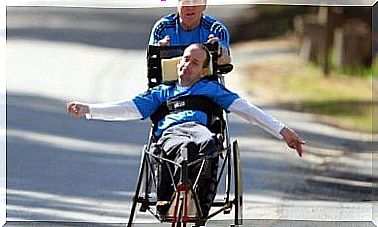How To Get Back To Work After Depression?

It’s not easy to go back to work after a depression. It is difficult to stick to routines and schedules again, and there is also the risk of a relapse and even the weight of social stigma. Like it or not, there are still those who do not understand this type of psychological condition and, far from offering help or support, it makes it difficult for them to return to the world of work.
When we talk about depression, stress or anxiety disorders, it is not common to find information about how to get back to life after a sick leave. This is, without a doubt, an issue as important as it is decisive, since in many cases it determines the full recovery or the risk of relapses.
The fears that inhabit the mind of the person who has been away from work for five, six months or a year can be multiple and often make this return difficult. The feeling of disconnection, doubts about their own skills, fear of being judged and the anguish of losing their job forever are obstacles that make it a little more difficult to return to work.
However, most of the time, the rescue of a routine, social interaction and integration in the work dynamics serve as an impetus to rescue motivation and the feeling of efficiency. As long as the person transitions properly and is supported by their environment, this feedback can be a success. Let’s list some strategies below.

How to get back to work after depression: 5 keys to success
Returning to work after depression is a challenge. Let’s think that a depression, with its consequent consequences, does not end when the doctor discharges us, but when we become functional again. This return to functionality requires many steps, which are not always simple.
Extended leave makes getting back to work much more difficult
A first aspect to consider when returning to work after a depression is the patient’s time off. It’s not the same to be away for a month or a year. Medical leaves for depression are usually long, lasting between 6 months and a year. As a general rule, we can say that the longer the leave, the greater the likelihood of complications in the return.
Another factor that must be taken into account is that there are cases in which the company directly opts for dismissal. Therefore, in these situations, the person will have to face another type of reality, which is nothing more than starting the search for a new job.
Working thoughts, ideas and attitudes
Extended leave often fuels certain fears and concerns in people when they return to work. The most common are as follows:
- Fear of not being competent and effective at work.
- Fear of being fired for not being as productive as others.
- Feeling disconnected from the desktop.
- Fear of getting tired, feeling discouraged and not being able to complete the entire workday.
- Fear of being judged or observed.
These and other ideas should be worked out with the psychologist. The best, if possible, is that the return is gradual, so that the person gains confidence. Furthermore, it is also advisable to leave a short transition time to work on these types of ideas and attitudes so that the reintegration is more positive.

Recover routines, organize schedules, contact co-workers
Returning to work after a depression means, above all, recovering old routines. In this way, something very positive for the person will be working in the following dimensions:
- Days before reinstatement, start taking care of your schedule. Sleep early and set the alarm for the time you used to wake up.
- Organize your tasks, manage priorities in order to prepare for the day of your reinstatement.
- It would be interesting to meet with your co-workers to notify them of your return. This way, you’ll also have an idea of what you’ll find at work, keeping up to date with the most important changes.
It’s better to make a progressive comeback; avoid whole journeys
We are aware that this formula is not always possible. However, it is advisable, when returning to work after depression, that the return be progressive. In other words, the ideal is to start with half a day of work.
In addition, it is very positive to have a support circle in the work environment, that is, to have the presence of professionals specialized in psychology in the company to facilitate this incorporation.

Activities to prevent relapse
In addition to the workplace, it is necessary for people to carry out various activities to prevent depression relapses. It is known, for example, that mindfulness practice is very appropriate in these cases, as revealed by a study by doctors Stefan Hofmann and Alice Sawyer, from the University of California.
On the other hand, having a hobby, having a good social support network and playing a sport are beneficial incentives that fuel motivation and take us away from that negative state of mind that leads to depression.
To conclude, if dealing with depression is itself a highly complex psychological art, returning to work after a long absence is also difficult. However, this door to the way back can also be found.









